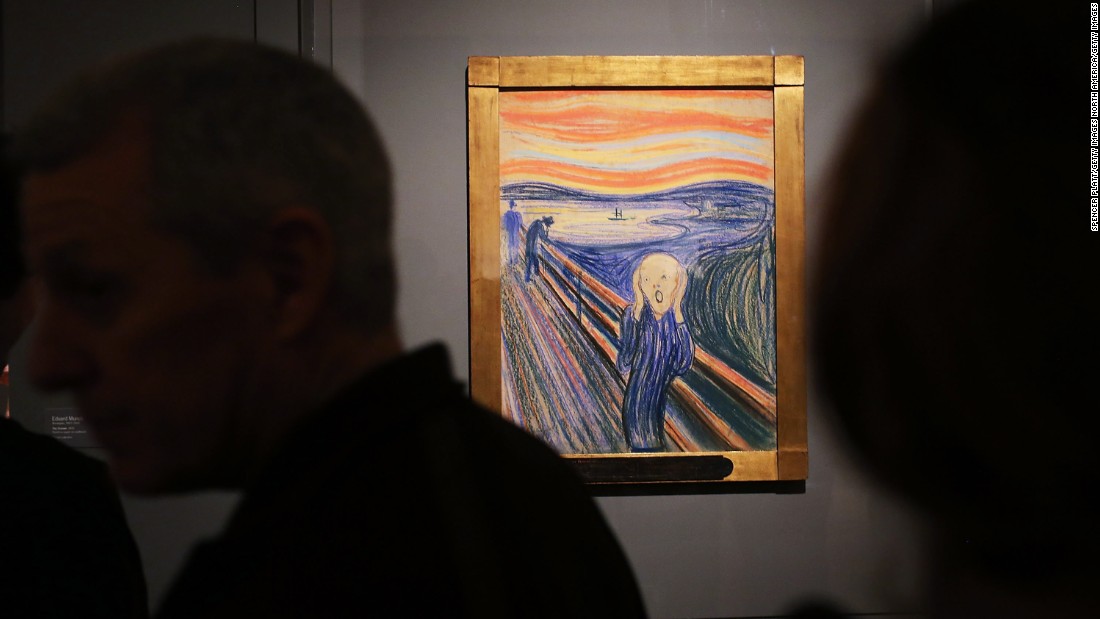The message “It could only have been painted by a madman”, scrawled and almost invisible in the upper left corner of the painting, was the subject of debate for decades and was widely regarded as an act of vandalism by a spectator of the play.

The painting was hung at the Van Gogh Museum in Amsterdam in 2015. It has rarely been exhibited in recent years due to damage. Credit: BAS CZERWINSKI / AFP / AFP / Getty images
But extensive research at the National Museum of Norway revealed that Munch wrote the sentence himself.
The expressionist masterpiece is one of the most celebrated works of modern times, heralded as a timeless representation of human anxiety. The subject’s distressed face has become so familiar that he recently received his own emoji.
The curators used infrared technology to analyze the message, which was added to the top of the finished painting, comparing it with Munch’s notes and letters and studying events at the time of the work’s first public exhibition.
“The writing is undoubtedly Munch’s own,” concluded Mai Britt Guleng, curator of the museum. “The calligraphy itself, as well as the events that took place in 1895, when Munch first showed the painting in Norway, all point in the same direction.”
After his first public disclosure, some critics rejected the unnerving painting and there was a frantic discussion about Munch’s mental state, crediting the idea that an indignant third party scribbled his own damning criticism on the work itself.
But the curators said it was probably the reaction that prompted Munch to add, with the artist upset by the critical response to the painting when he exhibited it in his hometown, Kristiania (now Oslo), for the first time.
“On a night of discussion at the Student Association, where Munch is believed to have been present, young medical student Johan Scharffenberg questioned Munch’s mental health, claiming that his paintings proved that he was not in his right mind.” said the museum. “It is likely that Munch added the inscription in 1895, or shortly afterwards in response to the judgment of his work.”
They added that Munch was hurt by the accusation and referred to it again in his diary notes.
“The Scream” was inspired by a walk Munch took in the city while in a state of physical and mental discomfort.
